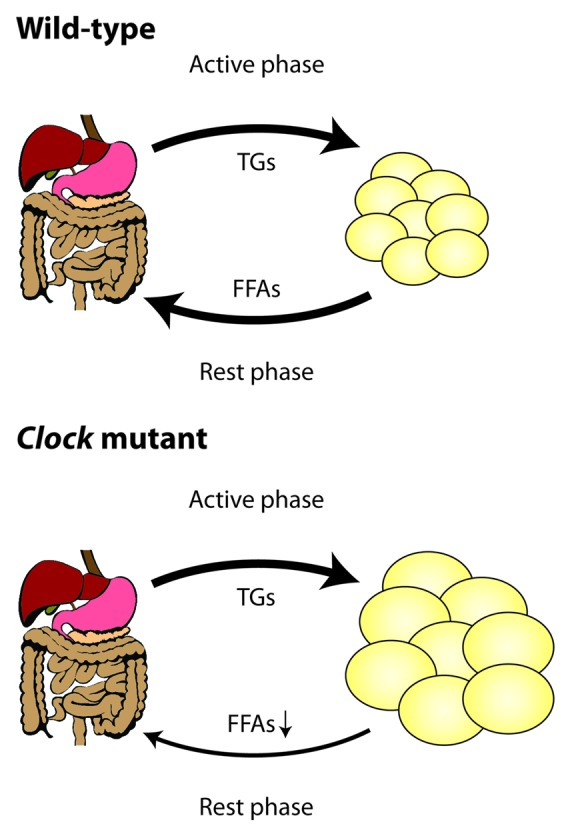
Figure 3. Rhythmic coordination of lipid energy metabolism by the circadian clock. In wild-type mice triglyceride transport to adipose tissues occurs predominantly during the night when the animals are active and eat. During the day adipose clocks promote lipid breakdown from lipid droplets and release of free fatty acids and glycerol into the blood. In Clock mutant animals lipid release is blocked, promoting over-accumulation of triglycerides in adipose tissues and, likely, compensatory overeating during the normal rest phase.
